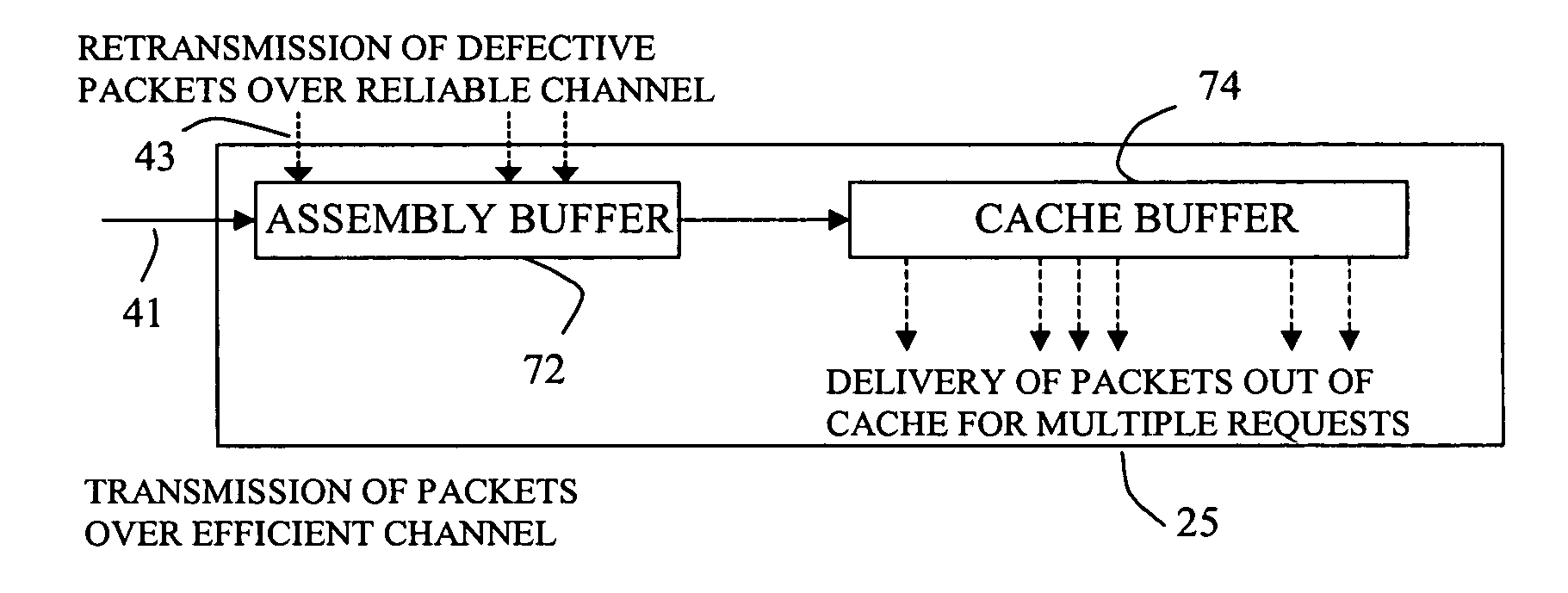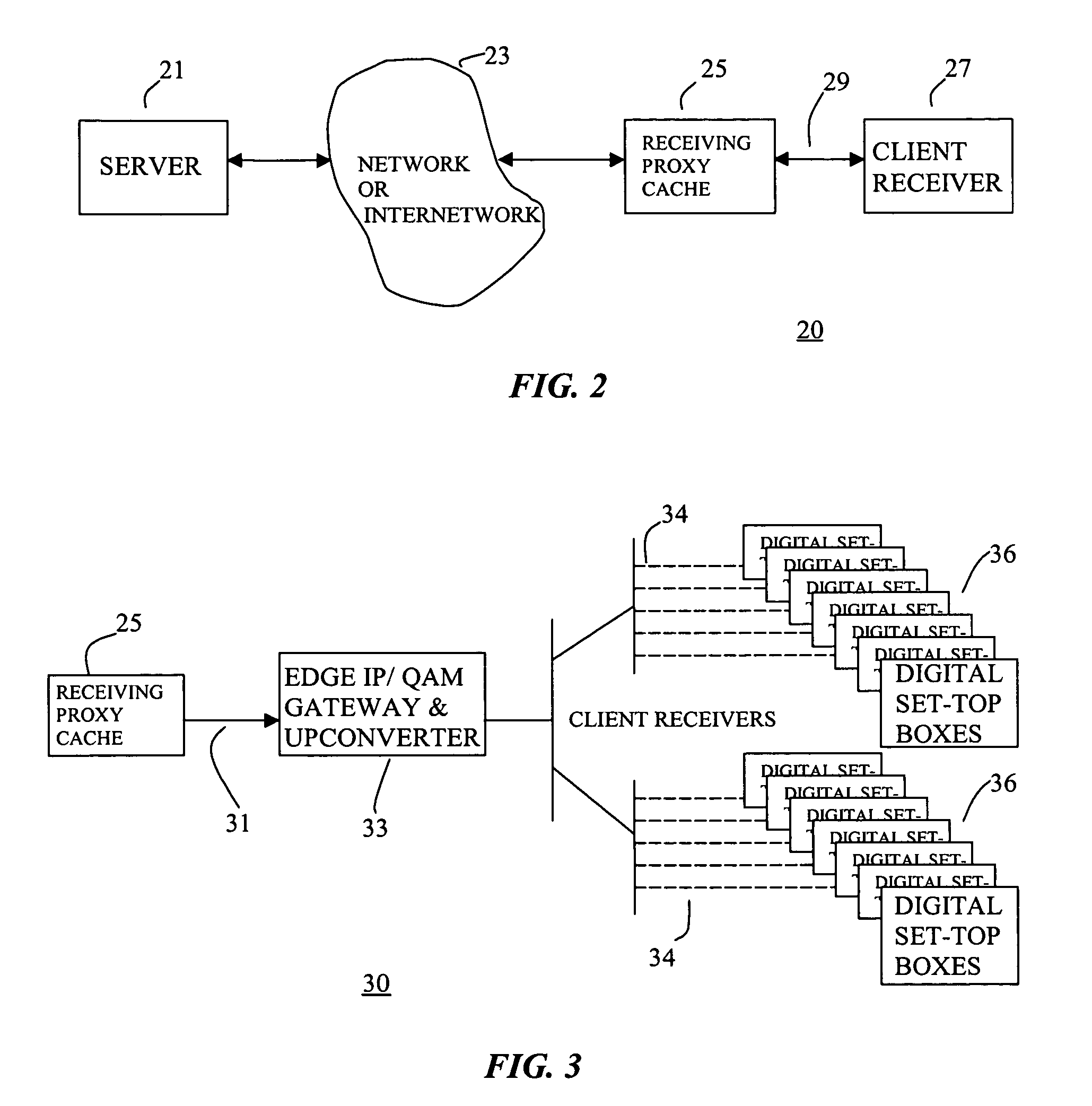Method and system for reliably and efficiently transporting data over a network
a data and network technology, applied in data switching networks, frequency-division multiplexes, instruments, etc., can solve the problems of insufficient data delivery without bit errors, large data files, and limited delay and delay jitter, etc., to achieve reliable and efficient data transport over a network and high data transport throughput
- Summary
- Abstract
- Description
- Claims
- Application Information
AI Technical Summary
Benefits of technology
Problems solved by technology
Method used
Image
Examples
Embodiment Construction
[0012]The present invention comprises, in a number of embodiments, a method and system for reliably and efficiently transporting data over a network. The method and system of these embodiments has high data transport throughput with minimum transmission delay and buffer delay. The method and system of these embodiments is also able to guarantee data delivery to the receiving process in the right order. In accordance with one embodiment, the present invention provides a method and a system for establishing reliable data transport using a data caching system. A key benefit of the data transporting method in accordance with the present invention is that it is capable of transporting data at an efficiency comparable to that of User Datagram Protocol (UDP) transport while maintaining complete reliability like that of the Transmission Control Protocol (TCP) transport.
[0013]While various embodiments are discussed in terms of digital video programs, it would also be advantageous to be able ...
PUM
 Login to View More
Login to View More Abstract
Description
Claims
Application Information
 Login to View More
Login to View More - R&D
- Intellectual Property
- Life Sciences
- Materials
- Tech Scout
- Unparalleled Data Quality
- Higher Quality Content
- 60% Fewer Hallucinations
Browse by: Latest US Patents, China's latest patents, Technical Efficacy Thesaurus, Application Domain, Technology Topic, Popular Technical Reports.
© 2025 PatSnap. All rights reserved.Legal|Privacy policy|Modern Slavery Act Transparency Statement|Sitemap|About US| Contact US: help@patsnap.com



